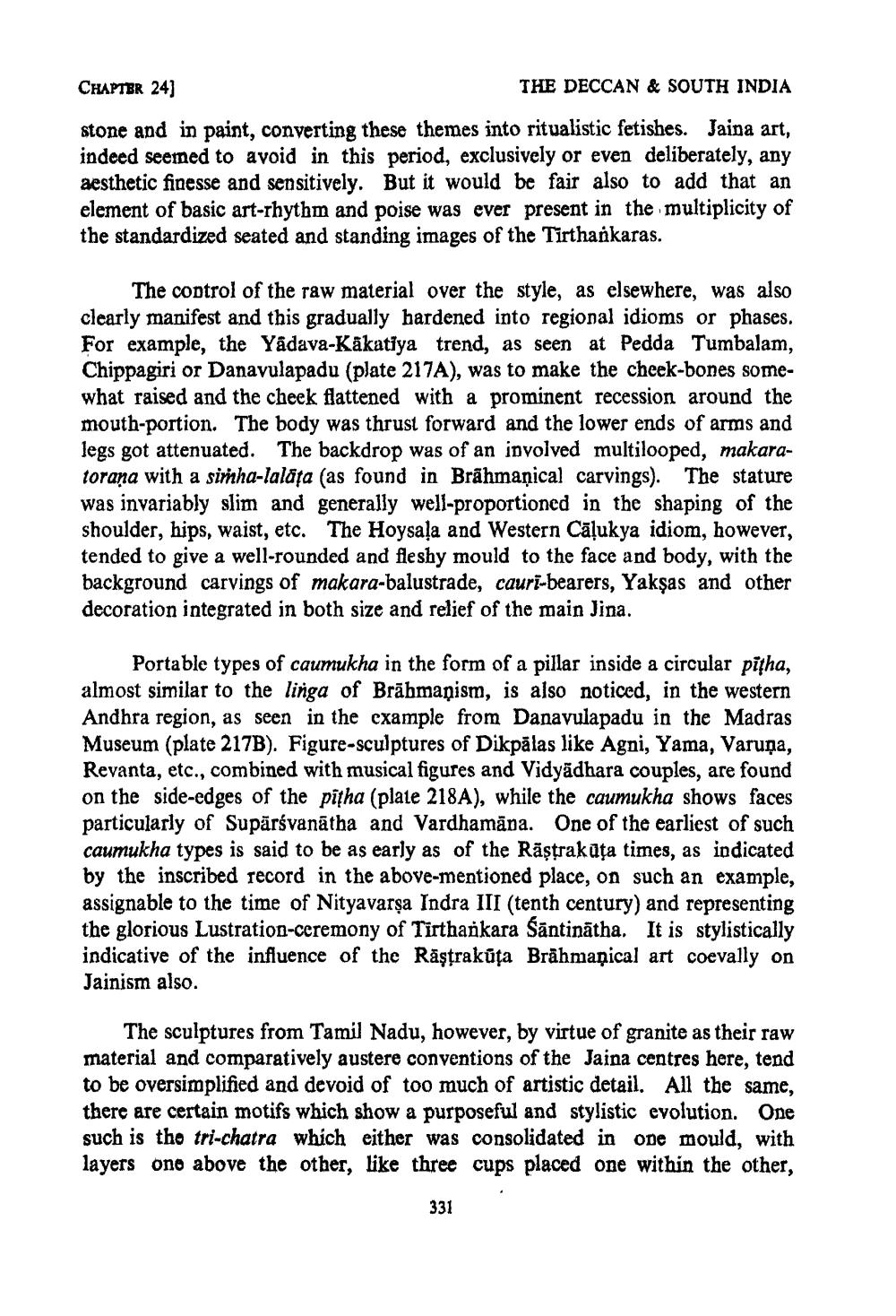________________
CHAPTBR 24)
THE DECCAN & SOUTH INDIA stone and in paint, converting these themes into ritualistic fetishes. Jaina art, indeed seemed to avoid in this period, exclusively or even deliberately, any aesthetic finesse and sensitively. But it would be fair also to add that an element of basic art-rhythm and poise was ever present in the multiplicity of the standardized seated and standing images of the Tirthankaras.
The control of the raw material over the style, as elsewhere, was also clearly manifest and this gradually hardened into regional idioms or phases. For example, the Yådava-Kakatiya trend, as seen at Pedda Tumbalam, Chippagiri or Danavulapadu (plate 217A), was to make the cheek-bones somewhat raised and the cheek flattened with a prominent recession around the mouth-portion. The body was thrust forward and the lower ends of arms and legs got attenuated. The backdrop was of an involved multilooped, makaratorana with a simha-lalata (as found in Brāhmaṇical carvings). The stature was invariably slim and generally well-proportioned in the shaping of the shoulder, hips, waist, etc. The Hoysa!a and Western Cāļukya idiom, however, tended to give a well-rounded and fleshy mould to the face and body, with the background carvings of makara-balustrade, cauri-bearers, Yakşas and other decoration integrated in both size and relief of the main Jina.
Portable types of caumukha in the form of a pillar inside a circular pitha, almost similar to the linga of Brāhmanism, is also noticed, in the western Andhra region, as seen in the example from Danavulapadu in the Madras Museum (plate 217B). Figure-sculptures of Dikpālas like Agni, Yama, Varuņa, Revanta, etc., combined with musical figures and Vidyadhara couples, are found on the side-edges of the pitha (plate 218A), while the caumukha shows faces particularly of Supārsvanātha and Vardhamāpa. One of the earliest of such caumukha types is said to be as early as of the Rāştrakūta times, as indicated by the inscribed record in the above-mentioned place, on such an example, assignable to the time of Nityavarşa Indra III (tenth century) and representing the glorious Lustration-ceremony of Tirthankara Santinātha. It is stylistically indicative of the influence of the Rāşțrakůţa Brähmaņical art coevally on Jainism also.
The sculptures from Tamil Nadu, however, by virtue of granite as their raw material and comparatively austere conventions of the Jaina centres here, tend to be oversimplified and devoid of too much of artistic detail. All the same, there are certain motifs which show a purposeful and stylistic evolution. One such is the tri-chatra which either was consolidated in one mould, with layers one above the other, like three cups placed one within the other,
331




